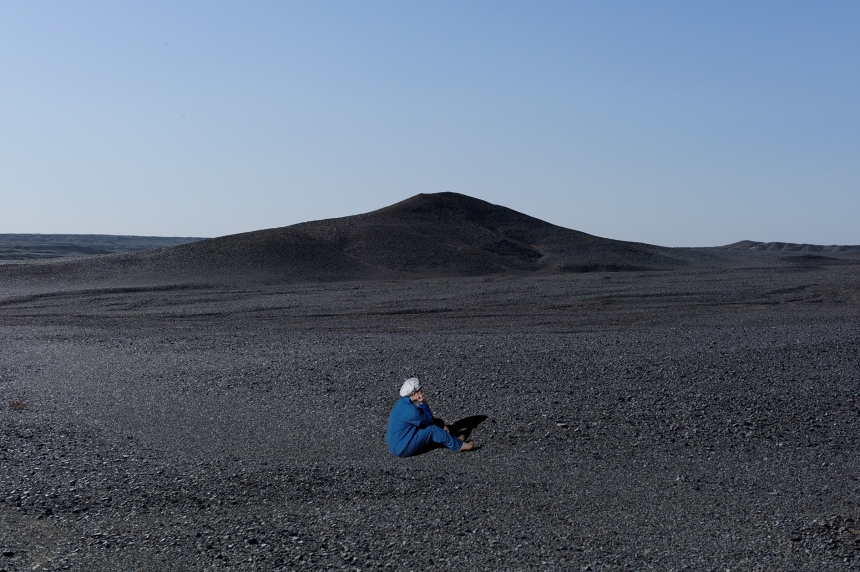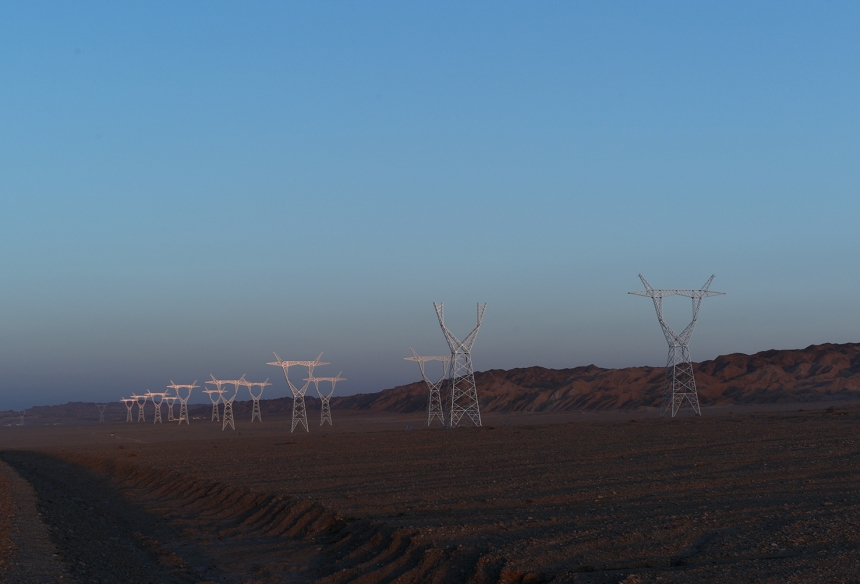John Gerrard
‹Working Drawing (Exercise Dunhuang)›
‹Sunset Pylons (Dunhuang)›
2014
For the exhibition ‹Exercise› by John Gerrard in the Kunsthalle Darmstadt 2015, a photographic edition was published consisting of two sheets, which can also be purchased individually. ‹Working Drawing› is a preparatory collage for the work ‹Exercise (Dunhuang)›, which was shown in the main hall at the time. Iconographically, memories of the melancholy copperplate engraving by Albrecht Dürer and his ‹Bauernsäule› [‹peasant column›] are awakened. The recording of the power line under construction, on the other hand, was not generated on the computer. This belongs to a solar voltaic system near Dunhuang.
John Gerrard
lives and works in Dublin and Vienna (* 1974 in North Tipperary, Ireland).
Exhibitions (selection)
2006: Seoul Museum of Art, Seoul, South Korea / 2010: Tate Britain, London, UK / 2011: Ivorypress, Madrid, Spain / 2014: Borusan Contemporary, Istanbul, Turkey / 2015: Kunsthalle Darmstadt / 2016: 11th Shanghai Biennale / 2017: Kunsthalle Darmstadt / 2018: Los Angeles County Museum of Art, Los Angeles, USA / 2020: Galway International Arts Festival, Galway, UK
Collections (selection)
Goetz Collection, Munich / Museum of Modern Art, New York / Museum Moderner Kunst Stiftung Ludwig, Vienna
Publications (selection)
Robin Mckay (ed.), Simulation, Exercise, Operations, with a preface by León Krempel and essays by Antoine Bousquet and others, Roundtable discussion, Oxford, Old Power Station, July 11, 2012, Falmouth: Urbanomic, 2015.
© John Gerrard
John Gerrard, Sunset Pylons (Dunhuang), 2014, Inkjet print on photographic paper (Hahnemühle Photo Rag), 40 x 60 cm, edition of 6 (including 4 for the Kunsthalle)
© John Gerrard

